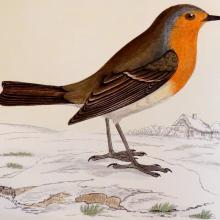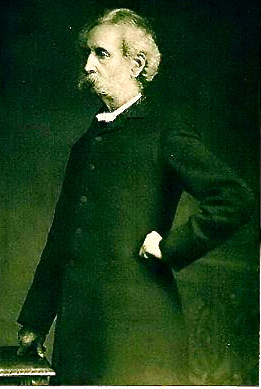
The plates reproduced here of a redbreast and partridge are two of 59 beautiful hand-painted engravings which appear in A History of British Birds by the Rev. F.O. Morris.
The edition we photographed, published in 6 volumes from 1862–64, is a very good set (corners ‘bumped with some wear’) and for sale at Le Troubadour on Henderson Row (visits by appointment).
Francis Orpen Morris (1810–93) was an Irish-born cleric, naturalist, author and member of the Ashmolean Society. His son described him in The Dictionary of National Biography as follows: ‘Of medium height, and of spare, wiry, and upright form, he looked like one who could do a good day's march without fatigue. To many he appeared to have not a little of the strict officer about him. … Still, beneath a somewhat reserved manner … there was ever beating the kindest of hearts’.

In the case of the redbreast, he first notes that one cannot help loving the bird despite its aggressive tendencies towards members of the same species:
... Faults he certainly has, or at least dispositions, which be such in us, but he fulfils to the letter the mission of his nature, and that is what “no man living” can say of himself.
An inhabitant of the wildest wood and the gayest garden, the most frequented road, and the most retired lane, the hedge of the pasture field, and the neighbourhood of every country-house, the Robin is an acquaintance of both old and young, and to each and every one he seems like an old friend.
As you walk along the hedgerow side at almost any season of the year, it may be, ‘nescio quid meditans nugarum,’ [thinking about nonsense] your wandering thought is for the moment arrested by the sight of a Redbreast perched on one of the topmost sprays, or by the sound of the pretty note that its owner warbles before you: you cannot help but stop a moment, and speak a word to the well-known bird, as if to an old acquaintance; and you almost fancy from his winsome attitude, the attention he seems to pay, and the quietness with which he remains, that he understands, if not your language, yet the purport of it, and is aware that you are a friend who will not hurt or harm him.